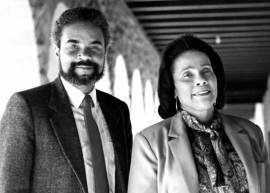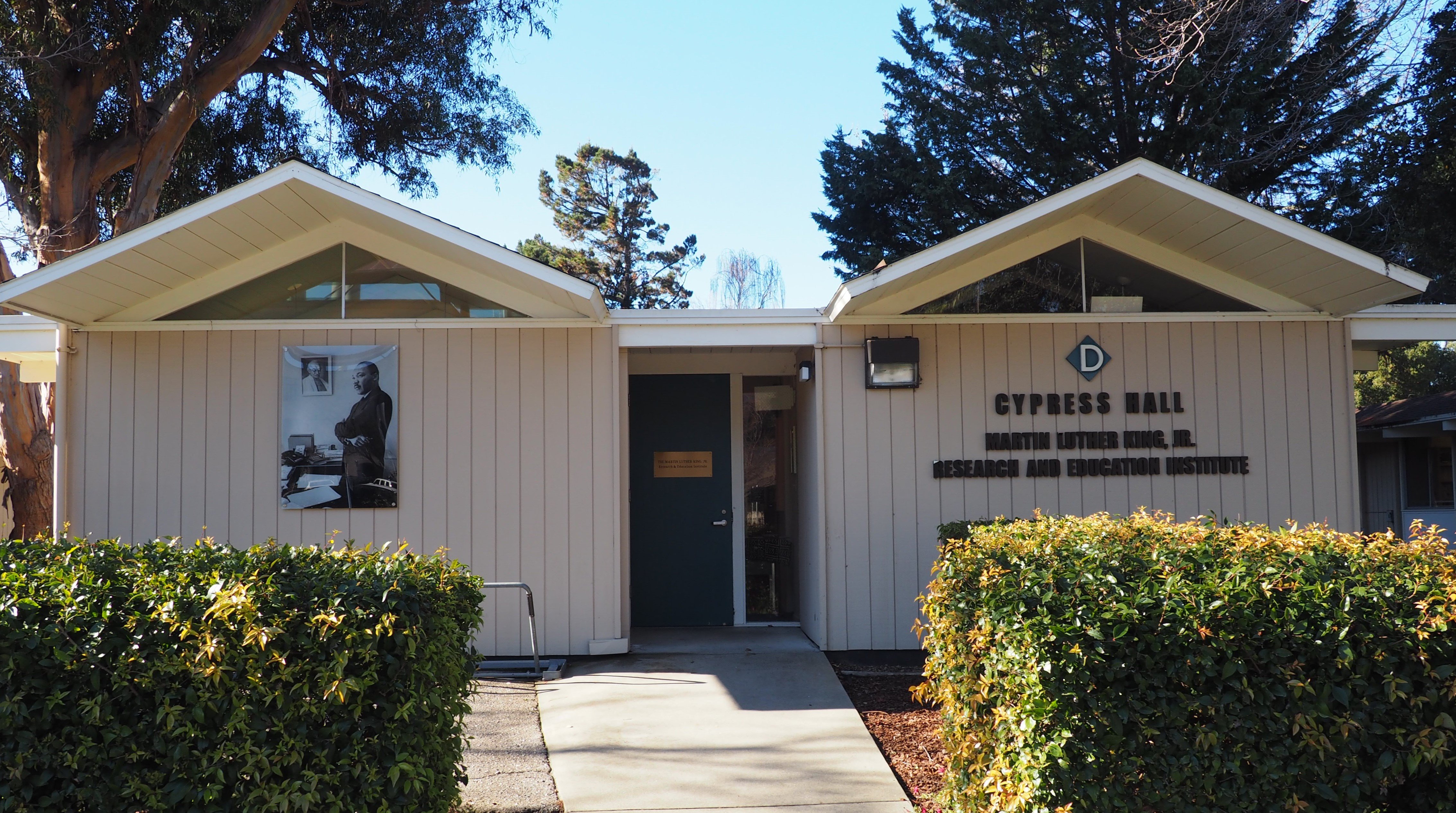Biking past the Science and Engineering Quad reveals an interesting dichotomy at Stanford. Behind you, the impressive and technologically-advanced buildings put Stanford’s academic excellence on proud display. But just ahead lies a much different picture.
In the shadow of Y2E2, you’ll find a row of shabby portables known as Cypress Hall. Located on the margins of campus, few Stanford students know where the hall is; even fewer are aware that one of these modest, outdated buildings is home to one of the world’s largest collections of scholarship regarding the late Dr. Martin Luther King Jr.

(Courtesy of Martin Luther King Jr. Institute for Research and Education).
In 1985, Coretta Scott King asked Stanford history professor Clayborne Carson to direct the King Papers Project, a collaborative effort to document, publish and archive thousands of Dr. King’s personal papers. Expanding on the work of this project, in 2005, Dr. Carson founded the Martin Luther King Jr. Research and Education Institute.
The Institute has published seven volumes of the King Papers, in addition to producing plays performed internationally, training scores of student researchers, producing an online King Encyclopedia and developing educational resources about the African American freedom struggle. The Institute has been visited by civil rights leaders, freedom fighters, even the Dalai Lama; the Institute’s most recent scholar in residence, Dr. Clarence Jones, was Dr. King’s personal attorney — the man who snuck out King’s “Letter from Birmingham Jail” from Birmingham Jail.
As the King Papers Project expanded out of its original Meyer Library office, the University offered Dr. Carson Cypress Hall D as a temporary facility, promising a permanent, more functional space would come. But whenever he inquired about the status of the new space, he received the same reply: Just wait a few more years.
Today, the King Institute remains in Cypress Hall D.
While Dr. Carson has been patiently waiting for a new home for the Institute, Stanford has invested billions of dollars into renovations and new projects — such as the Science and Engineering Quad directly across from the King Institute. The contrast between these two spaces offers a stark visual manifestation of many students’ criticisms that the University has failed to prioritize both the humanities and support for faculty of color.
As an institution that prides itself on a commitment to both disciplinary and social diversity, it would make sense for Stanford to center the work of the Institute’s humanities scholarship, research training and public outreach program. In a recent article, Stanford acknowledges that the work done at the Institute is important and uncommon, noting that it is “one of only a few large-scale research ventures focusing on a single African American.”
The fact that Stanford has these artifacts is an incredible honor for this university. So why do so few know about it?
The work of the King Institute today is more important than ever. Following the 2016 election, it is important to remember the stories and actions of those who came before us and apply their lessons to the challenges that lie ahead. Dr. King’s life is an extraordinary example of the principles and practice of nonviolent resistance, compassion and empathy, and an unending will to confront and challenge the forces of injustice and evil.
There is no denying that this school is, to use Dr. King’s words, a “vast ocean of material prosperity.” There is no shortage of resources here. The opening of the new $87 million McMurtry Building in 2015 is an encouraging and important start to a greater commitment from the University to the arts and humanities.
There is still more work to be done.
The King Institute is a critical asset essential to Stanford scholarship. It is time that the University acknowledges this, and I invite the new president and incoming provost to fully support the important work done there.
-Alex Ramsey ’17
Contact Alex Ramsey at aramsey5 ‘at’ stanford.edu.
